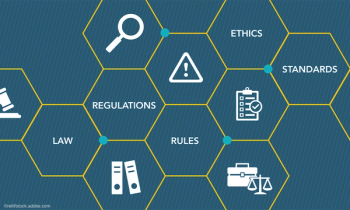
Trendspotter: Why EHR Documentation Impedes Information Sharing
A brief explanation of the patient's background, condition, and prognosis might be sufficient to document an encounter, an EHR note will go on for screen after screen of redundant text. As a result, it's difficult to spot the important points in an EHR-generated note. That's a problem, not only for physicians looking over their own notes, but also for communications between referring physicians and consultants.
In a perceptive post on the
The culprit, in Koriwchak's view, is the CPT coding system that physician practices use for billing. Because specific kinds of documentation are required to justify charges, he notes, and because vendors promise doctors that their products will maximize reimbursement, EHRs are designed to spit out notes that meet payer criteria and support "appropriate" billing codes.
So, while a brief explanation of the patient's background, condition, and prognosis might be sufficient to document an encounter, an EHR note will go on for screen after screen of redundant text - and in many cases, will pull in equally redundant patient histories from past notes. As a result, Koriwchak observes, it's difficult to spot the important points in an EHR-generated note. That's a problem, not only for physicians looking over their own notes, but also for communications between referring physicians and consultants.
All of this is true, yet CPT coding is not wholly to blame. There are also medico-legal and compliance issues that necessitate a particular type of documentation. And this documentation has grown ever more voluminous over the years, even for physicians who dictate or write their notes on paper.
If it were true that the need to defend oneself against billing audits was the sole reason for the current mode of EHR documentation, we might expect the EHRs used by capitated groups and group-model HMOs to be different from those designed for fee-for-service practices. But in fact, EHR vendors do not make different models for fee-for-service and capitated groups - and of course, some practices have both kinds of business. Non-capitated groups that pay salaries to their physicians, like the Mayo Clinic, still have to submit bills to health plans. So changing how physicians are paid would not solve this particular problem.
A couple of doctors who commented on Koriwchak's post suggested that perhaps only billing staff should use the full documentation generated by EHRs. Physicians could use a different part of the system to create more pertinent notes for themselves and other providers. The drawback is that, for medico-legal reasons, there can be only one legal, permanent medical record. Multiple records created by the same provider for the same patient would be terribly confusing and would create additional liability.
Besides billing and liability concerns, other human and technological factors help explain the nature of the documentation in today's EHRs. The human factor is that nobody would use an EHR unless the act of checking off drop-down boxes created textual documentation. (Most systems also allow users to document by exclusion, meaning that the system interprets every finding that's not abnormal as normal.) So in this type of system, there must be an automatic method for converting multiple choices into text.
Unfortunately, the methods that EHRs employ tend to be inflexible and not very intelligent. Over time, EHR software vendors have added intelligent features such as reminders for preventive care and alerts about potential drug interactions. But in the area of documentation, EHRs are rigidly programmed so that certain check-offs trigger preset textual notes.
My suggestion is that vendors develop a more useful type of documentation. Perhaps by entering certain key words that reflect how they think about particular kinds of cases, physicians could get the EHR to generate notes that more closely approximate the notes they would write or dictate if their aim were purely to communicate information to other providers. This isn't going to be easy, and it won't be quick; but if EHRs evolved in this direction, they might be much more valuable to physicians.
Of course, we'd still have to come up with a solution to the CPT dilemma. But perhaps that will go away on its own, as the healthcare system moves from fee for service to other reimbursement models. In the meantime, EHR documentation will continue to be a weak point of the technology.
Newsletter
Optimize your practice with the Physicians Practice newsletter, offering management pearls, leadership tips, and business strategies tailored for practice administrators and physicians of any specialty.








